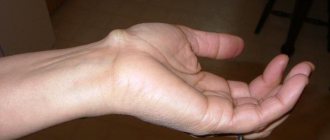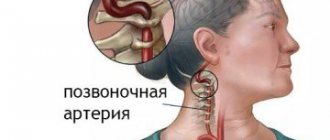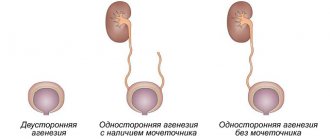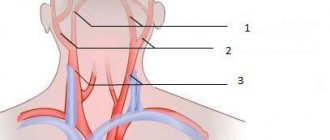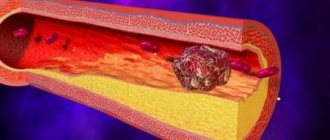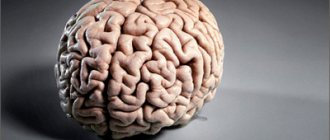Numbness of the fingers is a complete or partial loss of sensation in the entire hand or individual fingers, which can be on one or both hands. The correct name is hypoesthesia. This symptom occurs in many neurological disorders, but also occurs in healthy people.
Each peripheral nerve has a motor and a sensory part. Irritation or damage to sensory fibers of any nature - mechanical, tumor, inflammatory, autoimmune - causes a disorder in the form of numbness, burning, tingling.
At CELT you can get advice from a neurologist.
- Initial consultation – 3,200
- Repeated consultation – 2,000
Make an appointment
In a healthy person, numbness in the fingers of the hand – most often the right one – occurs due to constant overload of the hand muscles. This happens to pianists, hairdressers, programmers, and sometimes to massage therapists and cosmetologists. Sometimes the hands go numb during sleep, when a person lies on his side for a long time with his hand placed under his body. In all these cases, numbness is caused by a temporary disruption of blood flow in the arm due to mechanical compression of blood vessels and nerve trunks. Numbness is often accompanied by a burning sensation or a crawling sensation, but all this quickly passes after the limb returns to its normal physiological position.
Provoking factors
A completely healthy person rarely experiences numbness; they may indicate a hidden pathology in the form of:
- consequences of injuries;
- various diseases of the spinal column;
- joint inflammation;
- degenerative or destructive diseases of the cartilage and ligaments of the hand;
- nervous and mental disorders;
- persistent decrease in blood pressure;
- diseases of the endocrine glands.
There are currently no clear scales that determine the severity of hand numbness. If the unpleasant sensations bother you from time to time and go away after simple movements or rubbing, then you hardly need to worry. However, in case of frequent repetition of numbness, when it happens several times a week or the discomfort increases, you should consult a doctor as soon as possible, as this may be the beginning of the disease.
Treatment
Treatment for numbness after diagnosis:
- B vitamins
- preparations ;
- non-steroidal anti-inflammatory drugs;
- painkillers ;
- osteopathy;
- physiotherapy ;
- massage;
- physiotherapy;
- acupuncture.
Osteochondrosis, protrusions and hernias are treated with medications. In some cases, surgical treatment may be indicated. An endocrinologist, cardiologist, and neurologist prescribe treatment that corresponds to the identified disease.
Treatment for Raynaud's disease can be conservative or surgical. Conservative means lifelong use of medications. Surgical – sympathectemia (cutting of nerve fibers transmitting spasmodic impulses).
To relieve scalene muscle syndrome, painkillers, physiotherapy, manual therapy, and acupuncture are prescribed.
On this topic
- Numbness
Can tingling throughout the body be dangerous?
- Ekaterina Nikolaevna Kislitsyna
- March 26, 2020
It is important to prevent diseases that cause poor posture and muscle strain. If you have to perform actions in one position with tension in your arms and back, then you need to take a break to rest, relaxing your muscles.
To avoid the occurrence or recurrence of Raynaud's disease, you must always keep your feet and hands warm, avoiding prolonged hypothermia.
Timely consultation with a doctor, treatment, as well as the implementation of the required preventive measures during work, rest, and nutrition are necessary conditions for eliminating neurovascular disorders in the left hand.
Diseases in which numbness of the hands is a symptom
These are conditions such as:
- rheumatic diseases of the joints of the fingers;
- osteochondrosis of the cervical spine, which also causes coordination problems, headaches, and limited movement of some muscles of the shoulder girdle, which is caused by bone growths or osteophytes;
- vertical and horizontal protrusions (hernias) of the intervertebral disc;
- thrombosis of blood vessels of the hand or finger;
- multiple sclerosis, in which the myelin sheath of the nerve is destroyed and the central nervous system is affected;
- carpal tunnel syndrome or another type of tunnel syndrome, when a nerve is compressed in a bone or muscle-ligamentous tunnel;
- metabolic disorders caused by diabetes mellitus;
- anemia or anemia, when tissues lack oxygen;
- inflammation of the brachial nerve plexus;
- various inflammatory processes of hand tissues, aseptic or purulent;
- amyotrophic lateral sclerosis or ALS, when at the onset of the disease some patients interpret increasing weakness in the arm as “numbness”
- disturbance of blood flow in the brain - in fairness, it must be said that in this case, movements, vision, speech are also most often impaired, but this is also one of the common reasons why the fingers suddenly go numb;
- Raynaud's syndrome, developing as a result of vibration or genetically determined, when numbness is accompanied by pallor, turning into cyanosis, and then into redness of the skin of the hand
- alcohol intoxication, in which the hands become numb like “gloves”, which is caused by damage to the peripheral nerves;
- diphtheria, which, thanks to universal vaccination, occurs easily and in an erased form; one of the manifestations may be polyneuropathy.
Numbness of the fingers may be the reason for a clinical examination, which will eventually reveal the truth. Modern diagnostic equipment makes it possible to give a preliminary conclusion already during the first day of the examination, or at least significantly narrow the range of the diagnostic search.
Numbness of each finger has its own characteristics. Since the branches of three main nerves are responsible for the innervation of the skin of the hand.
Which specialist should I contact?
Since numerous pathologies can cause numbness in the fingers, it is advisable to make an appointment with a general practitioner - a therapist. He will prescribe all the necessary diagnostic tests. After studying their results, the patient will be referred to doctors of narrow specializations - a neurologist, rheumatologist, endocrinologist, orthopedist, traumatologist.
What can you think about when different fingers are numb?
All fingers on the hand are innervated differently, and by the characteristics of unpleasant sensations one can indirectly judge what caused the disease.
The first or thumb on the palmar surface is innervated by the median nerve, most often irritation is caused by compression or compression. People who constantly load this finger suffer - watchmakers, pianists, jewelers.
In some cases, the cause is a benign tumor that mechanically compresses the nerve. This may be a neurofibroma arising from supporting or glial nerve cells, or a hemangioma, the source of which was capillaries.
People who constantly carry heavy bags or grip handlebars excessively may develop stenotic transverse ligamentosis. This is a condition in which the ligaments lose their natural elasticity, become stiff and stop stretching. The result is the so-called carpal tunnel syndrome with damage to the median nerve.
The index finger and thumb on the dorsal surface are innervated by the radial nerve. Impaired sensitivity in them may be a manifestation of inflammation of the epicondyles of the humerus or epicondylitis, or compression of the radial nerve in the area of the humerus.
You should consult a doctor if numbness lasts longer than 5 - 10 minutes, does not go away after kneading and straightening the hand, and repeats several times during the week.
The middle finger of the hand is partly innervated by the median and partly by the ulnar and radial nerves - its numbness is accompanied by a feeling of “twisting” of the entire palm, similar to calf cramps. Sensory disturbances also appear in this finger when carpal tunnel syndrome occurs, when the transverse ligament presses the nerve too much against the bones of the wrist. Loss of sensitivity is noticeable more often at night, it becomes difficult to hold objects, and shaking the hand stops the discomfort. It seems to a person that the brush has become heavier and thicker. Sometimes swelling does occur.
Often, numbness of the finger occurs in people who are constantly exposed to hypothermia, when they develop inflammation of the inner wall of blood vessels or endarteritis.
The fourth and fifth or ring and little fingers are innervated by the ulnar nerve. The habit of constantly leaning on the elbow, as well as working with trays and daily overload of the wrist contribute to the damage. In men, numbness of these fingers may be the first sign of contracture due to degeneration of the aponeurosis or tendon plate of the palm. Unpleasant sensations in these fingers cannot be ignored, since if the ulnar nerve is damaged, contracture or immobility can form in the joints of the fingers.
Fingertips - it is most difficult to determine why the tips become numb, since the number of reasons is large. This is a violation of the blood supply in the cervical spine, caused by the formation of an atherosclerotic plaque, iron deficiency, the onset of diabetes mellitus, and inflammation of the pancreas. This is inflammation and degeneration of the finger joints, Raynaud's syndrome, venous insufficiency and thrombophlebitis that complicates it. These are chronic stresses and acute traumatic experiences that happen in the life of every person. These are arterial hypertension or vascular hypotension, chronic poisoning, harmful working conditions.
Scleroderma
One of the most severe autoimmune diseases, in which the skin, vessel walls, and internal organs gradually become denser, losing elasticity and their normal functions. This disease is not inherited, but the risk of getting sick among relatives is still higher than average. Most often, the disease affects women aged 30-50 years. The reasons for its occurrence are unknown.
Symptoms of scleroderma:
- thickening of the skin (starts from the fingers), numbness and tingling
- disappearance of facial wrinkles
- the appearance of dark and light spots on the skin, the shine of compacted areas
- the appearance of small pinpoint hemorrhages on the skin
- numbness of fingers and other affected areas, Raynaud's phenomenon
- pain in muscles and joints
- shortness of breath, increasing respiratory failure
- digestive disorders
- decreased vision
- inability to open mouth wide, hoarseness of voice
For diagnosis, it is usually enough to glance at the patient. But blood tests (general, biochemical, autoantibody tests) are often used to confirm the presence of the disease. In doubtful cases, a biopsy of the affected area of skin is performed, which is then examined under a microscope.
Treatment of the disease is symptomatic, that is, it is aimed at relieving the main signs of the disease. They use anti-inflammatory drugs, mucus thinners, laxatives, steroids and other medications. In addition, a balanced diet, giving up bad habits, working in cold conditions, and timely treatment of wounds and ulcers are very important.
In addition to scleroderma, almost any autoimmune disease can cause nerve damage and numbness in the fingers. Therefore, if necessary, the therapist will give a referral to a rheumatologist to rule out immune failure as the cause of numbness.
Some psychological problems (depression, for example) can be disguised as unpleasant sensations in the arms and legs. Often they are limited to only the fingers. Therefore, if, in addition to numb hands, there are complaints of sweating, rapid pulse, insomnia, causeless tears and a feeling of melancholy, then you need to urgently consult a specialist. Depression is a very serious illness that requires adequate treatment with medication.
Diagnostics
Conducted individually, the search begins with excluding the most dangerous conditions. According to indications, the following studies may be prescribed:
- Electroneuromyography (ENMG of the upper extremities)
- duplex scanning of arteries and veins of the upper extremities
- X-ray of the cervical spine
- Magnetic resonance imaging of the cervical spine, brain, joints
- blood chemistry;
A specific list of diagnostic procedures is determined by the attending physician based on clinical examination data. Sometimes a diagnostic search leads to the discovery of diseases that a person did not even suspect about.
Additional reasons
The preliminary diagnosis depends on which finger is going numb.
| What finger | Possible pathologies |
| Big | Trauma, pinched nerve, rheumatoid arthritis, diabetes, pathologies of the brachial nerve or elbow joint, stroke, myocardial infarction, B vitamin deficiency, atherosclerosis. |
| Pointing | Neuropathies, osteochondrosis, tunnel syndrome, spondylosis, damage to the radial nerve, damage to the interosseous nerve, hernia (cervical spine). |
| Average | The above reasons, ischemic heart disease, obliterating endarteritis, atherosclerosis, Raynaud's disease, osteochondrosis of the 7th cervical vertebra. |
| Ring and/or little finger | Pathological process in the functioning of the nervous system, hernia in the spine, disc protrusion, manifestation of osteochondrosis in the form of muscular-tonic syndrome. |
Cervical hernia: symptoms
The main causes of numbness in the middle finger on the left hand
- Thoracic or cervical osteochondrosis, which is complicated by pinching of the spinal root.
- Serious vascular pathologies, atherosclerosis. A large number of atherosclerotic plaques form on the walls, causing the vascular lumen to decrease. First the middle finger goes numb, then the hand.
- Endarteritis of the upper extremities is a serious vascular disease. With it, the blood vessels narrow greatly, blood circulation is disrupted, and the fingers go numb. The disease is dangerous because gangrene can develop. Develops as a result of hypothermia.
- Coronary heart disease, which developed as a result of atherosclerosis, leads to numbness of the middle finger of the left hand. It may cause angina pectoris. In some situations, the little finger and the entire left hand go numb.
- Numbness of the middle finger in case of carpal tunnel syndrome. This compresses the middle nerve when the wrist is constantly injured.
- The symptom may be a consequence of a lack of vitamin A, B. Sensitivity is completely impaired.
Body position
Numbness of the upper extremities occurs due to taking an uncomfortable position or staying in a constant position for a long time. Unpleasant symptoms occur at any time of the day in the hands or elsewhere. Numbness does not occur immediately. Initially there is discomfort, tingling, burning. After this, numbness occurs.
If you do not change position, pain occurs. After this, the hands cramp and pain appears. When a person moves his hand, his condition worsens, and after some time it is completely eliminated. If you take an uncomfortable position, the blood vessels are pinched. As a result, the blood supply to the arms and legs worsens and numbness appears.
Numbness at night
Sometimes your arms begin to go numb because your pajamas are too tight or your limbs are pulled under your head. If you don't get rid of rings and bracelets before bed, your fingers may become numb.
Sensitivity deterioration becomes more frequent if you lead a sedentary lifestyle and move little. In this case, curvature of the spine occurs, and blood circulation deteriorates. Numbness occurs due to carpal tunnel syndrome.
Venous insufficiency is the main cause of numbness in all limbs during sleep. Periodically, numbness occurs at night due to a lack of B vitamins.
The greatest concern arises when numbness of the limbs on one side is combined with dizziness, elevated blood pressure, and problems with speech function. These are all symptoms of an ischemic stroke.
Uncomfortable pillow
An uncomfortable pillow can cause arm numbness. Unsuitable shape and volume of bedding causes excessive deflection of the cervical vertebrae. As a result, blood does not flow to the area where the peripheral nervous system, which is responsible for the work of the hands, is located. Therefore, numbness may occur.
When the condition appears due to an increased and hard pillow, you will be able to cope with this pathology on your own. To this end, the night rest item will need to be exchanged for a more suitable accessory from an orthopedic point of view. You can get rid of numbness in your arms and legs at night.

